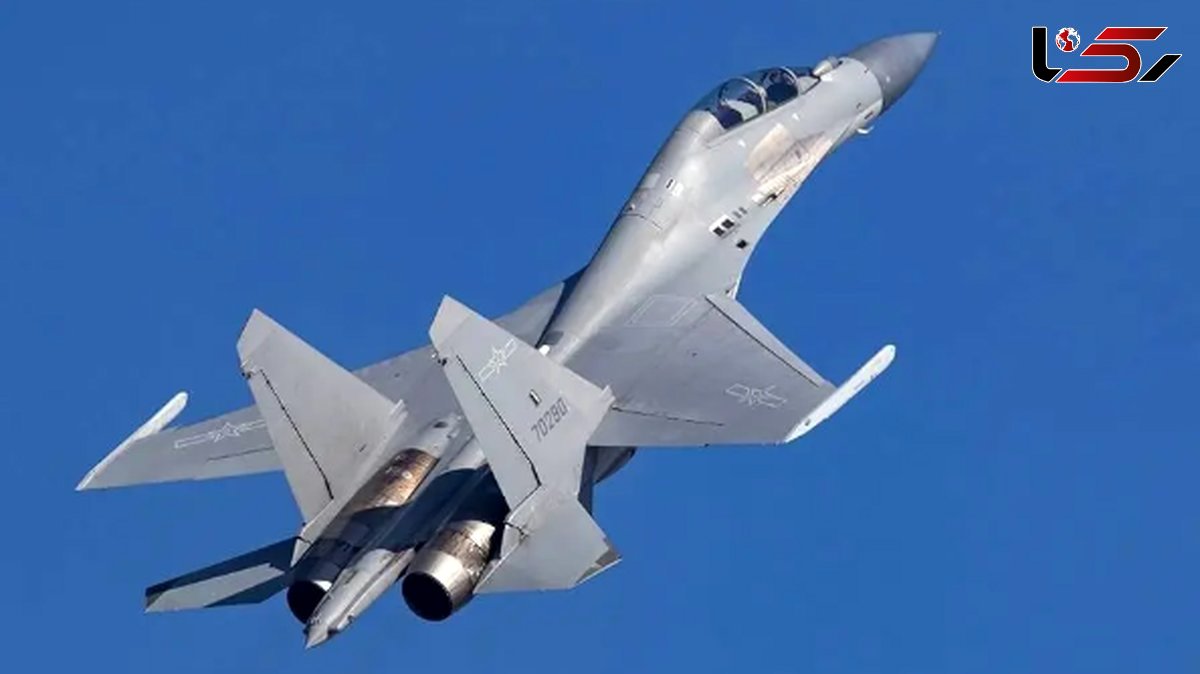Su-35 or a Chinese Alternative? Weighing Iran’s Best Options for a Modern Air Force
Rokna Political Desk: With Russia delaying the delivery of Su-35 fighter jets to Iran, advanced Chinese alternatives such as the J-10C or the J-20 are increasingly drawing the attention of the Islamic Republic of Iran Air Force (IRIAF) as potential solutions against regional threats.

For decades, the IRIAF has faced critical challenges, including an aging fleet of pre-revolution American aircraft and restrictions imposed by international sanctions that have severely limited access to advanced Western technology. Russia, regarded as Tehran’s principal defense partner, had pledged to deliver Su-35 fighters, but deliveries have been delayed for more than two years, with only Yak-130 trainer aircraft supplied so far.
According to Rokna, these delays come at a time when Iran faces mounting threats from Israel (equipped with F-35s and F-15s), Saudi Arabia (with F-15s and Eurofighter Typhoons), and the United States. This situation underscores the urgency for alternative options. China, with its growing strategic ties with Tehran, is emerging as an attractive supplier. Military analyses and technical specifications suggest that the Shenyang J-16 may be the most suitable replacement for the Su-35, particularly given the harsh Middle Eastern environment—high temperatures, sand, and dust—and the long-range threats confronting Iran.
The Su-35 Benchmark
The Su-35 is a Russian 4.5++ generation fighter, single-seat, twin-engine (AL-41F1S with thrust vectoring), equipped with the Irbis-E PESA radar (capable of tracking 30 targets simultaneously with a 400 km range). It can reach Mach 2.25, has a combat radius of 1,600 km (on internal fuel), a service ceiling of 18 km, and can carry 8 tons of armaments, including R-77 and R-37M long-range air-to-air missiles. Designed for both air superiority and strike missions, the Su-35 has proven capable in Middle Eastern operations (notably in Syria). However, delivery uncertainties, exacerbated by Western sanctions on Russia and reliance on Russian supply chains, pose significant risks for Iran.
Chinese Options: J-10C and J-16
China currently offers two principal fighter models comparable to the Su-35: the Chengdu J-10C (a light, single-engine, 4.5-generation fighter) and the Shenyang J-16 (a heavier, twin-engine, 4.5-generation fighter, developed from the Su-30MKK). Both employ AESA (Active Electronically Scanned Array) radars—superior to the Su-35’s PESA—and are armed with PL-15 long-range missiles (200+ km), designed to counter Israel’s F-35.
Chengdu J-10C: Affordable, Agile Option
The J-10C, also known as the “Vigorous Dragon,” is a single-seat, single-engine fighter (WS-10B, 144 kN thrust), measuring 16.9 meters in length with a maximum takeoff weight of 19 tons. It can reach Mach 1.8, has a combat radius of 1,200 km, a service ceiling of 18 km, and can carry up to 7 tons of weapons, including PL-15 and PL-10 missiles and precision-guided bombs. Its AESA radar features 1,500 T/R modules, coupled with internal electronic warfare systems. Priced between $40–50 million per unit, it offers rapid delivery, as demonstrated by the 25 units supplied to Pakistan in 2022.
Tested in Dubai (2023) and the UAE, the J-10C has proven resilient in sandy, dusty conditions, though its shorter range presents challenges against long-distance threats such as Israeli strikes launched from over 1,000 km away. In the 2025 India-Pakistan conflict, reports suggest that the J-10C successfully downed three Indian Rafales with PL-15 missiles, demonstrating its beyond-visual-range (BVR) effectiveness.
Shenyang J-16: The Ideal Heavyweight Replacement
The J-16, nicknamed the “Hidden Dragon,” is a twin-engine, two-seat fighter (WS-10A engines, each generating 132 kN thrust), measuring 22 meters in length with a maximum takeoff weight of 33 tons. It can achieve Mach 2, has a combat radius of over 1,500 km (extending to 3,000 km with external tanks), a ceiling of 20 km, and carries 12 tons of weapons. Its arsenal includes PL-15 and PL-17 missiles, YJ-91 anti-ship missiles, and KAB-500 guided bombs. The advanced AESA radar, coupled with greater use of composite materials, reduces its radar cross-section. The J-16D variant specializes in SEAD (Suppression of Enemy Air Defenses) with integrated jamming systems. Chinese pilots have described it as “flawless,” outperforming the Su-30.
Compared with the Su-35, the J-16 offers superior payload (12 tons vs. 8 tons), longer range, advanced avionics, and dual-pilot capacity—particularly advantageous for complex strike missions in Iran’s mountainous terrain. The aircraft has been tested in high-temperature environments during the Falcon Shield 2024 exercises in the UAE, with WS-10A engines proving resilient to sand and dust. On paper, it is capable of intercepting Israeli F-15s and F-35s, as well as engaging hostile naval assets, although it has yet to be tested in real-world combat against such adversaries.
Comparative Assessment for Iran’s Environment and Threats
| Feature | Su-35 | J-10C | J-16 |
|---|---|---|---|
| Engines & Maneuvering | Twin-engine, thrust vectoring, +9g | Single-engine, fly-by-wire, agile like F-16 | Twin-engine, composites, +8g |
| Radar & EW | PESA Irbis-E | AESA, internal EW | Advanced AESA, J-16D SEAD |
| Combat Radius / Payload | 1,600 km / 8 tons | 1,200 km / 7 tons | 1,500+ km / 12 tons |
| Cost & Delivery | $85m, delayed | $40–50m, rapid | $60–70m |
| Middle East Climate | Proven in Syria | Tested in Dubai, dust-resilient | UAE exercises, heat-resistant |
| Regional Threats | R-37M BVR | PL-15 (limited range) | PL-17, anti-ship YJ-91 |
The J-16’s extended range and heavy payload make it more suitable for long patrols over the Persian Gulf and countering long-range Israeli strikes (such as Operation Rising Lion 2025). The J-10C, while cheaper and effective for point defense, is less capable as a full Su-35 replacement. Overall, the J-16 emerges as the most effective option for Iran’s strategic requirements.
Send Comments